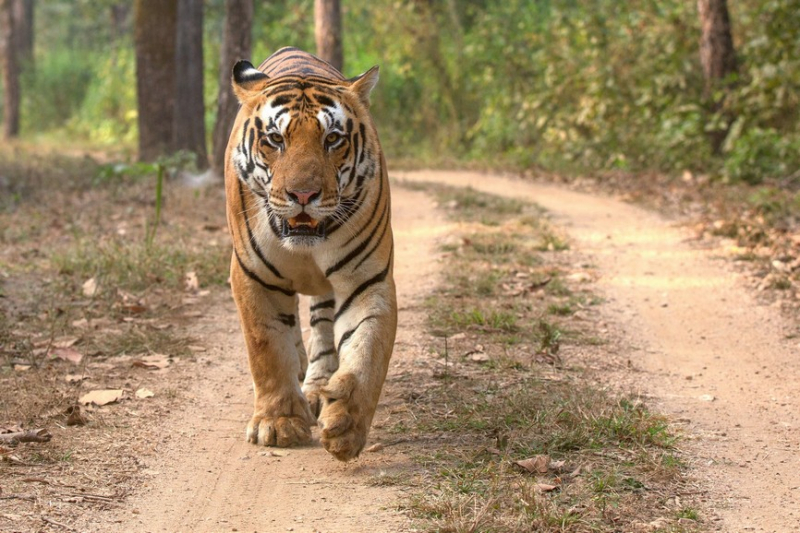Most Bengal tigers are found in India
Most Bengal tigers are found in India, which is one of the most interesting facts about Bengal tigers. Native to the Indian subcontinent, where it has existed for at least 12,000 years, since the Late Pleistocene, the Bengal tiger is a large cat. With over 3,000 Bengal tigers, India presently boasts the greatest residual population of Bengal tigers and the wildest tigers overall in a single nation, making up nearly 70% of the total wild population of the species.
In India, Bengal Tigers are primarily found in upland subtropical and temperate forests. They can be spotted residing in Bangladesh's Sundarbans mangrove region, where it is said that they swim between islands. The only tigers known to thrive in a mangrove ecosystem are Bengal Tigers. Between 300 and 500 Bengal tigers exist in Nepal's prime lowland forest, which is their preferred habitat, and in Bhutan's subtropical Himalayan foothills and north temperate woods (between 50 and 150.1 Bengal tigers).
For thousands of years, the cultures of India and the surrounding nations have included the Bengal tiger. A tiger is one of the creatures represented on the Pashupati seal, an artifact from the Indus Valley Civilization that is thought to be around 4,000 years old. Tigers are also heavily featured in the insignia of the Chola dynasty. Since then, Bengal tigers have continued to serve as a significant emblem for the area and are now the national animals of both Bangladesh and India. From Shere Khan in "The Jungle Book" through Richard Parker in "The Life of Pi," tigers have a long literary history.












